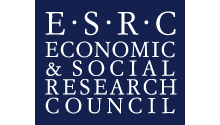The question of whether it is possible to characterise grammatical knowledge in probabilistic terms is central to determining the relationship of linguistic representation to other cognitive domains. We present a statistical model of grammaticality which maps the probabilities of a statistical model for sentences in parts of the BNC into grammaticality scores, using various functions of the parameters of the model. Experiments with a classifier on test sets containing different levels of syntactic infelicity have achieved encouraging levels of accuracy. These results suggest that it may be possible to characterise grammaticality judgements in probabilistic terms using an enriched language model (for more details, see here).
In a different set of experiments, we use a set of enriched n-gram models to track grammaticality judgements for various kinds of passive sentences in English. These experiments indicate that our n-gram models achieve high accuracy in identifying ill-formed passives in which ill-formedness depends on local relations within the n-gram frame, but they are far less successful in detecting non-local relations which produce unacceprability in other types of passive construction. We take these results to indicate some of the strengths and limitations of word and lexical class n-gram models as candidate representations of speakers' grammatical knowledge (for more details, see here).
A sample graph of the performance of our n-gram models on the passive data.
In our Cognitive Science 2014 paper Measuring Gradience in Speakers' Grammaticality Judgements we present evidence that grammaticality is a gradient rather than a binary property. Details of the experiments and the results are given in the paper.
In recent work we use unsupervised language models trained on corpora from a variety of domains and languages to predict speakers' grammatical acceptability judgements. We apply normalising measures to the probability distributions that these models generate in order to filter out the effects of sentence length and word frequency. These measures give us predicted grammatical acceptability scores. We evaluate these models against the mean acceptability judgements for crowd sourced annotated test sets in which grammatical infelicities have been introduced. We also test the models against sets of crowd sourced annotated linguists' examples.
This work is described in our ACL 2015 paper Unsupervised Prediction of Acceptability Judgements, and in a recent conference paper Predicting Acceptability Judgements with Unsupervised Language Models.
Datasets
The annotated data sets for our experiments are available below, and the open source toolkit for running our unsupervised models can be accessed from our software page. Datasets with human-annotated acceptability ratings (all files are tab-delimited csv files):


